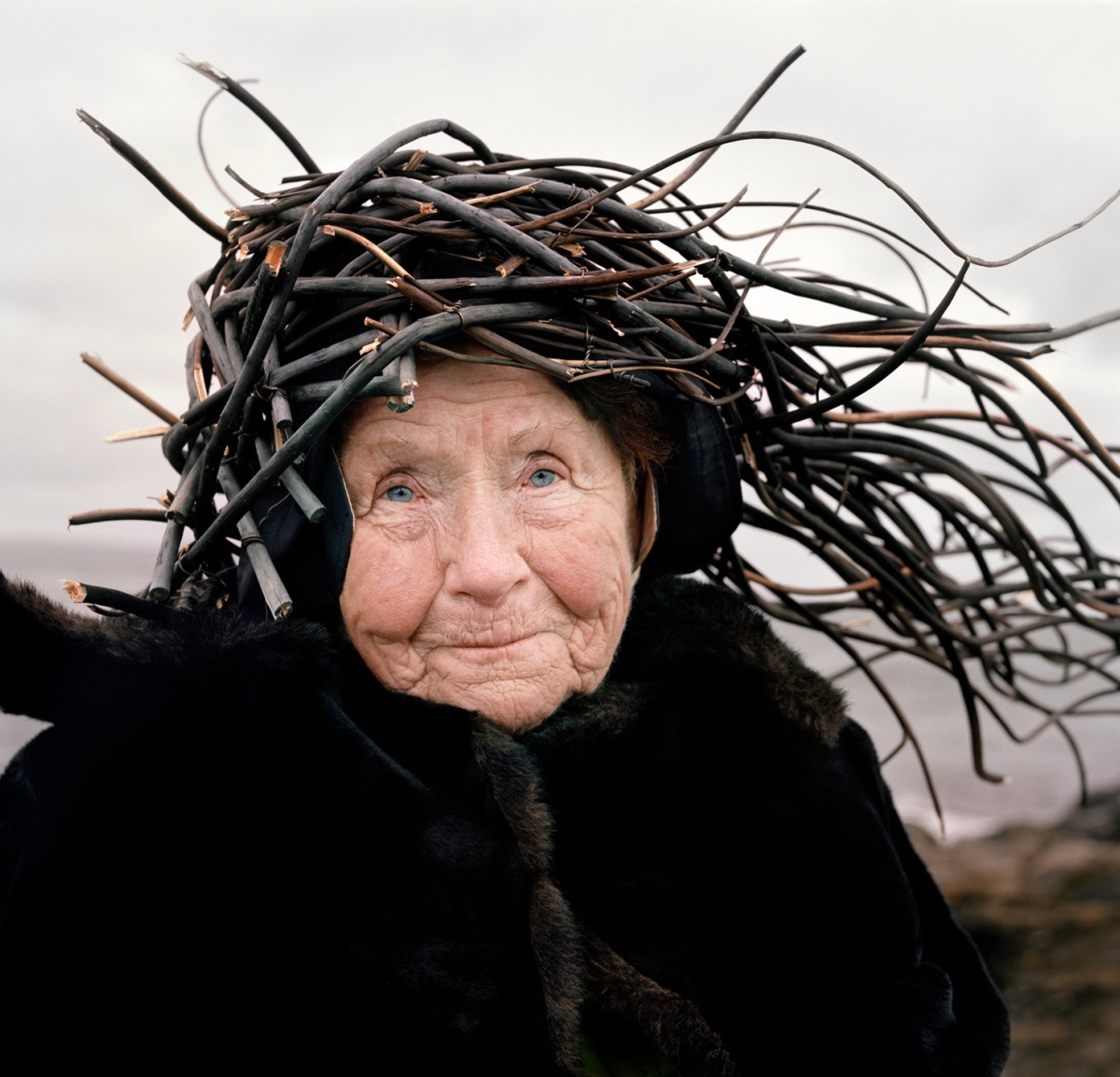We’ve posted about the photography series, Eyes as Big as Plates, a couple of times on insta, but it’s high time for us to dig deeper into this striking photography project gone WILD.

For each photograph, a retired senior is placed in a remote landscape wearing elements of the landscape itself. Is this some sort of odd fashion shoot, you might ask? After all, it isn’t uncommon these days for fashion labels and brands to photograph their latest collections in natural landscapes. A cotton t-shirt and denim trekking through a dusty desert landscape. A flowery dress floating through a lush meadow. Shiny loafers on city streets.
But photographers Riitta Ikonen and Karoline Hjorth, the collaborative duo behind Eyes as Big as Plates, aren’t trying to sell you anything. They want to tell you a story.


The title, Eyes as Big as Plates, is a tribute to Norwegian folklore, referencing a story about a large-eyed dog (or possibly a troll) who lives beneath a bridge.
Riitta Ikonen had long been fascinated by Nordic mythology and wanted to create a body of work around exploring the stories there. Somehow she came across the work of Karoline Hjorth, who had been photographing Norwegian grandmothers. Ikonen got in touch, shared her vision for the project, and the two began planning a series that would showcase older people (often marginalized and stereotyped) as powerful figures from Nordic lore and legend.
Although the project began as a play on characters from Nordic folklore, it has evolved into something much bigger today.


This isn’t a typical photo shoot where models are staged to represent a brand, their own personal selves and interests erased in the process. Hjorth and Ikonen take the opposite approach – they create the photograph based on who the subject is – their interests, their memories, their professions, their own personal connection to the natural world and how they feel about the landscape they’re in.
And of course the landscape itself is also part of the process. It is not chosen for the photograph. But rather, the photograph evolves out of the landscape. Wild weeds, thick ice sheets, birch branches, clam shells, moss, seaweed, overgrown rhubarb stalks, the list goes on.
The photographers, the models, the landscape and surrounding wild life – they all contribute to the resulting magic.



And isn’t there something rather magical about each photograph? Kind of otherworldly. And yet completely of our world, all the way down to earth.
“Eyes as Big as Plates has evolved into a continual search for modern human’s belonging to nature.”
Karoline Hjorth
Each work is part sculpture, part storytelling, part performance art, part landscape art – yet fully human.



Another element explored in this series is Time.
From a technical stand point, the photographs themselves require a great amount of time to create. From finding a subject and getting to know them to finding the right location and getting acquainted with it. And then there’s the highly collaborative yet time consuming costuming process. The analogue photography techniques that Ikonen and Hjorth use to capture it all (shooting only with natural light and film on a Mamiya medium-format camera).

But there are other, more subtle questions about time.
The local folklore and mythology – what has survived from these stories that once informed and shaped our human cultures?
The subjects themselves – their lives have come to their final chapters, at least here in their current bodies. Their lines and marks, canes and postures are evidence of this. Yet despite the evidence, how strong they appear, how proud and stout, how enduring. What is it, then, that endures?
And then there’s time on the landscapes too. In our ever expanding man-made world, where is the wildness? What does wildness mean to us now? And what have we lost? Not only outside, but inside of us too. Because these photographs remind us that we are irrevocably connected. The wildness is in us, and we are in it.
The collection as a whole explores who we are, but also where we belong.



So far, Ikonen and Hjorth have photographed more than 50 seniors in 15 different countries – Norway, Finland, Sweden, The Faroe Islands, Iceland, Greenland, UK, US, France, Japan, Czech Republic, South Korea, Scotland, Tasmania and Senegal.
The people they’ve photographed include retired farmers, fishermen, zoologists, village chiefs, surfers, plumbers, opera singers, reindeer herders, housewives, artists, academics and a 90-year old parachutist.
Not only has their work been exhibited in many museums around the world, but they’ve also been published in a gorgeous 176- page book, also titled Eyes as Big as Plates.


Thankfully, the project has been successful, allowing Ikonen and Hjorth to continue their collaboration. Obviously it all came to a screeching halt during the Covid pandemic, but it seems like they are trying to find a way to move everything forward now.
Not sure about you, but I absolutely love this series and can’t wait to see what these talented two women create together next.
Check out more photographs from the series on their website here or on Karoline Hjorth’s site here.
Follow Karoline on instagram here and Riitta Ikonen here.
Check out the book here or at your local bookseller.
Featured title image is Agnes from Eyes as Big as Plates by Karoline Hjorth and Riitta Ikonen.

